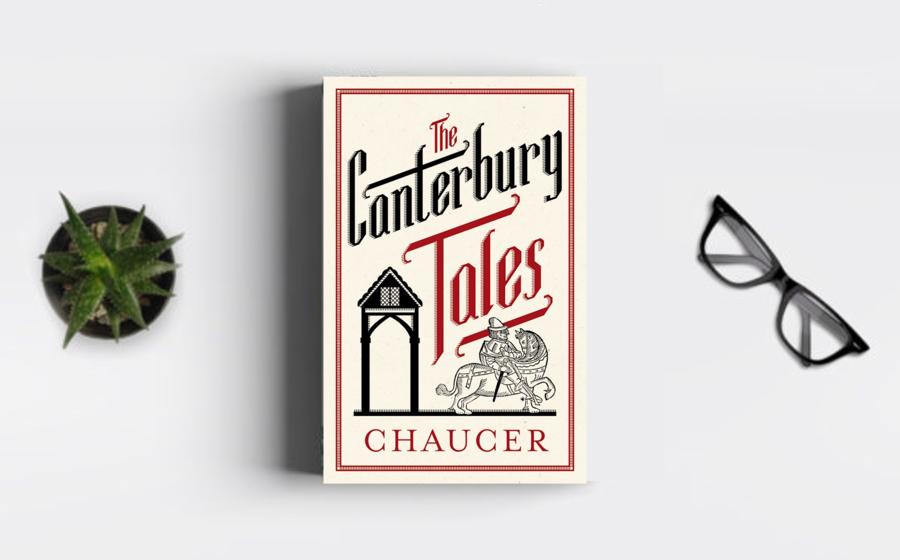In the annals of literary history, Geoffrey Chaucer's
"The Canterbury Tales" stands as a crowning
achievement, an unparalleled masterpiece that captures
the spirit, diversity, and vibrancy of medieval England.
Written in the late 14th century, this collection of
stories told by a group of pilgrims on their way to
Canterbury Cathedral offers a panoramic view of society,
revealing the intricacies of human nature, social
dynamics, and the timeless pursuit of storytelling. As
we embark on the journey through "The Canterbury Tales,"
it becomes clear that this work is not merely a
collection of entertaining narratives; it is a profound
exploration of the human condition, a social commentary,
and a testament to Chaucer's literary prowess. The
complexity of characters, the insightful satire, and the
narrative innovation firmly establish "The Canterbury
Tales" among the top books of all time.
"The Canterbury Tales" is renowned for its narrative
structure, a frame story that provides the overarching
framework for a collection of individual tales. Chaucer
ingeniously employs the device of a storytelling contest
among a diverse group of pilgrims traveling to the
shrine of St. Thomas Becket in Canterbury. This
pilgrimage context not only connects the tales but also
serves as a microcosm of medieval society, bringing
together individuals from various social classes,
professions, and walks of life.
The frame story
introduces readers to a host of characters, each with
distinctive personalities, backgrounds, and motivations.
From the noble Knight to the bawdy Wife of Bath, the
pious Prioress to the cunning Miller, Chaucer's cast of
pilgrims reflects the rich tapestry of medieval England,
offering a cross-section of society that becomes the
canvas upon which the tales unfold.
The
pilgrimage context adds layers of meaning to the
storytelling, as the characters' interactions,
reactions, and interruptions become as significant as
the tales themselves. Chaucer skillfully intertwines the
frame story with the individual narratives, creating a
literary mosaic that transcends conventional
storytelling conventions.
At its core, "The
Canterbury Tales" serves as a mirror reflecting the
multifaceted aspects of medieval society. Chaucer's keen
observations and satirical wit illuminate the social,
political, and religious landscapes of his time. The
tales become a vehicle for exploring themes such as
love, morality, deception, and the pursuit of happiness,
allowing Chaucer to comment on the complexities and
contradictions of human behavior.
The General
Prologue, where each pilgrim is introduced, serves as a
microcosm of society, showcasing the stark disparities
between the various estates, from the dignified nobility
to the working class and the clergy. Through the diverse
voices of the pilgrims, Chaucer addresses issues such as
corruption within the Church, the changing roles of
women, and the fluidity of social mobility.
The
satire in "The Canterbury Tales" is both humorous and
incisive. Chaucer employs irony, parody, and social
critique to expose the hypocrisies and shortcomings of
different classes and professions. The Merchant's tale,
for instance, satirizes the complexities of marriage and
gender roles, while the Pardoner's tale delves into the
moral corruption within the Church. Chaucer's ability to
infuse humor into his social commentary contributes to
the enduring appeal and relevance of "The Canterbury
Tales."
One of the defining strengths
of "The Canterbury Tales" lies in Chaucer's ability to
create characters that are not mere caricatures but
complex, nuanced individuals with their own virtues,
vices, and idiosyncrasies. Each pilgrim emerges as a
distinctive voice, contributing to the collective
narrative while embodying the intricacies of human
nature.
The Wife of Bath, for example, is a
memorable character whose prologue and tale explore
themes of gender, marriage, and power dynamics. Her
bold, candid personality challenges traditional
expectations of women in medieval society. Similarly,
the Knight's chivalrous demeanor contrasts with the
Miller's crude humor, highlighting the diversity of
human experiences and perspectives.
The pilgrims'
interactions during the journey further reveal their
personalities and relationships. From the rivalry
between the Miller and the Reeve to the friendly banter
between the Host and the pilgrims, Chaucer weaves a
tapestry of human interactions that resonates with
authenticity and realism.
"The Canterbury
Tales" is celebrated for its diverse array of tales,
showcasing Chaucer's versatility as a storyteller. The
collection spans various genres, from romance and
fabliau to moral allegory and tragedy. Each pilgrim's
tale reflects their individual tastes, beliefs, and
narrative preferences, contributing to the richness and
variety of the overall work.
The tales also
exhibit linguistic diversity, as Chaucer skillfully
adapts his language to suit the characters and genres.
The refined elegance of the Knight's tale contrasts with
the earthy, vernacular style of the Miller's tale. This
linguistic versatility enhances the authenticity of the
characters and their storytelling personas.
Chaucer's narrative experimentation extends to the
structure of individual tales. The use of rhyme royal,
terza rima, and other poetic forms adds a layer of
sophistication to the storytelling, showcasing Chaucer's
command over various literary techniques.
"The Canterbury Tales" is not
only a literary masterpiece but also a cultural and
historical artifact that provides invaluable insights
into the linguistic and social fabric of medieval
England. Chaucer's use of Middle English captures the
linguistic evolution of the period, making the work a
linguistic bridge between Old English and Modern
English.
The pilgrimage setting itself is
emblematic of the religious and cultural practices of
the time. The shrine of St. Thomas Becket at Canterbury
Cathedral held immense significance, attracting pilgrims
from various walks of life. Chaucer's decision to set
his tales within the context of a pilgrimage reflects
the cultural milieu of 14th-century England, where
religious observance, communal gatherings, and
storytelling were intertwined.
"The Canterbury
Tales" has endured through the centuries, leaving an
indelible mark on literature and popular culture. Its
influence can be traced in later works, adaptations, and
artistic interpretations. The characters, themes, and
narrative structure continue to resonate with readers,
ensuring the continued relevance of Chaucer's magnum
opus.
"The Canterbury Tales," it becomes evident that Chaucer's work is not only a literary triumph of the medieval period but a timeless exploration of humanity. The narrative innovation, social commentary, character complexity, narrative variety, and cultural significance collectively elevate "The Canterbury Tales".






